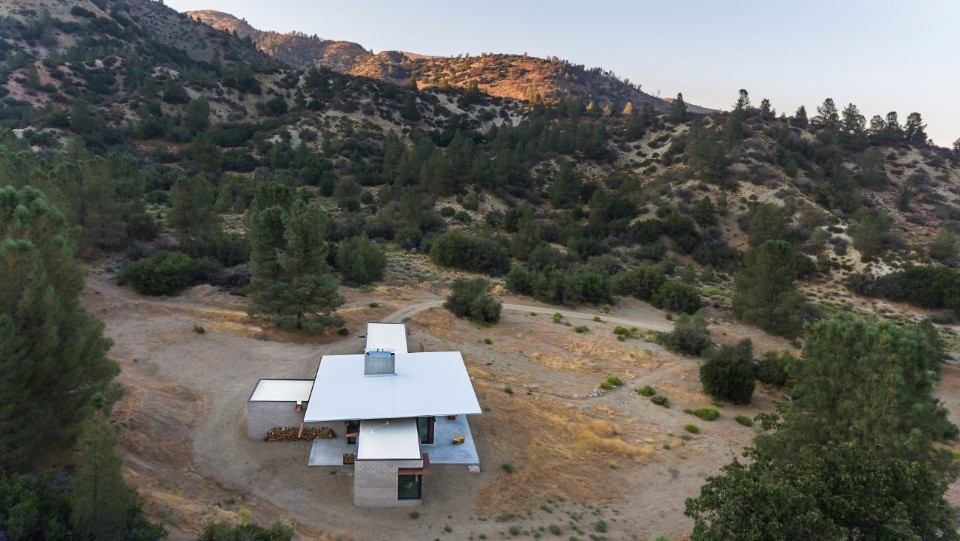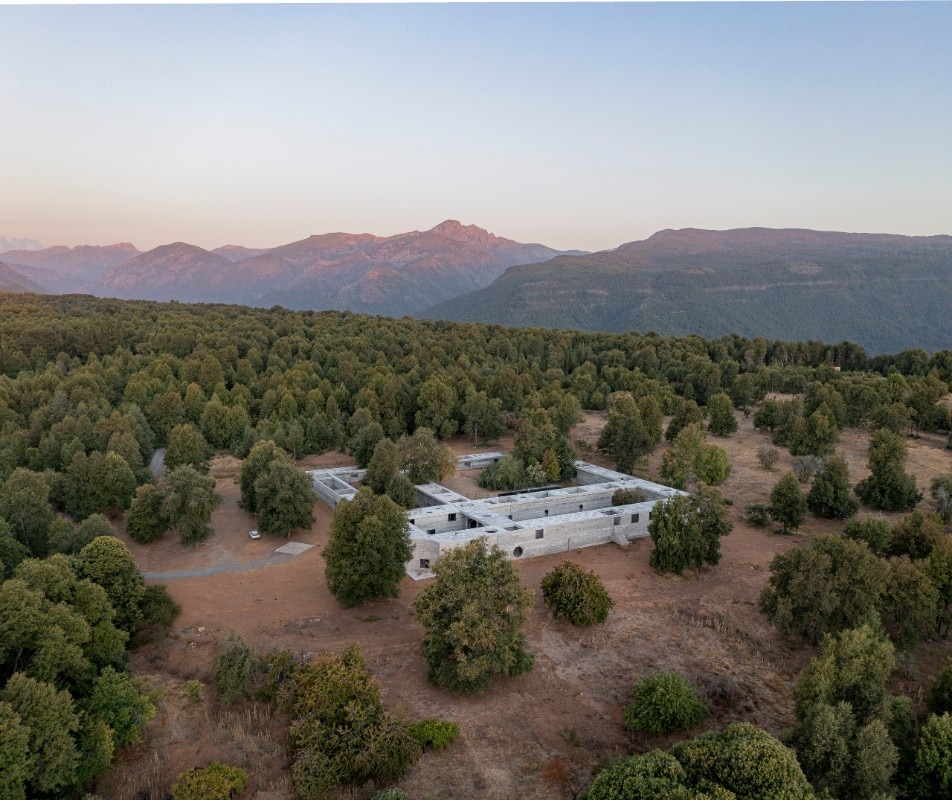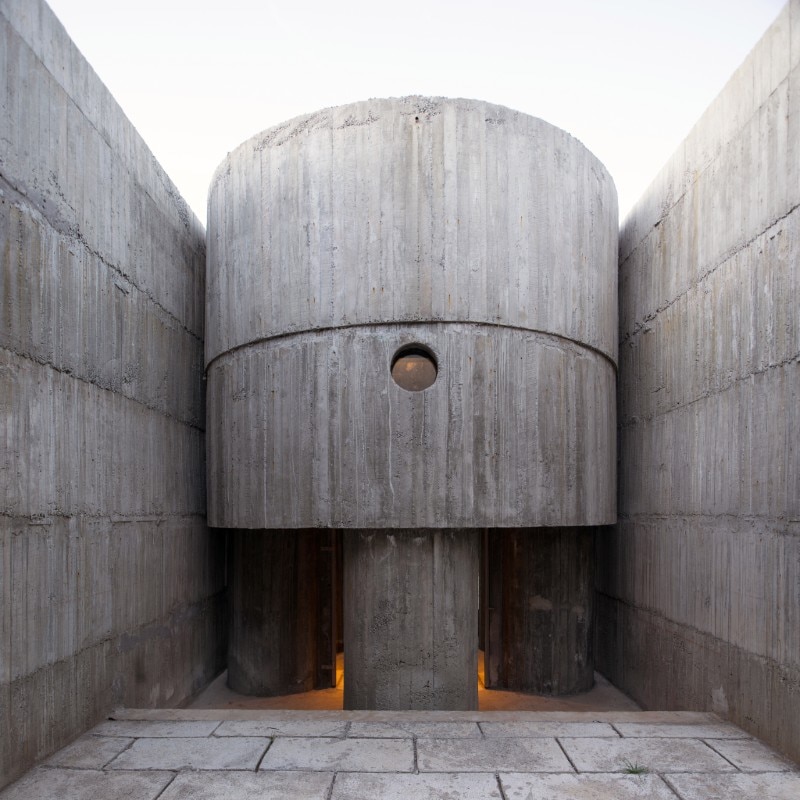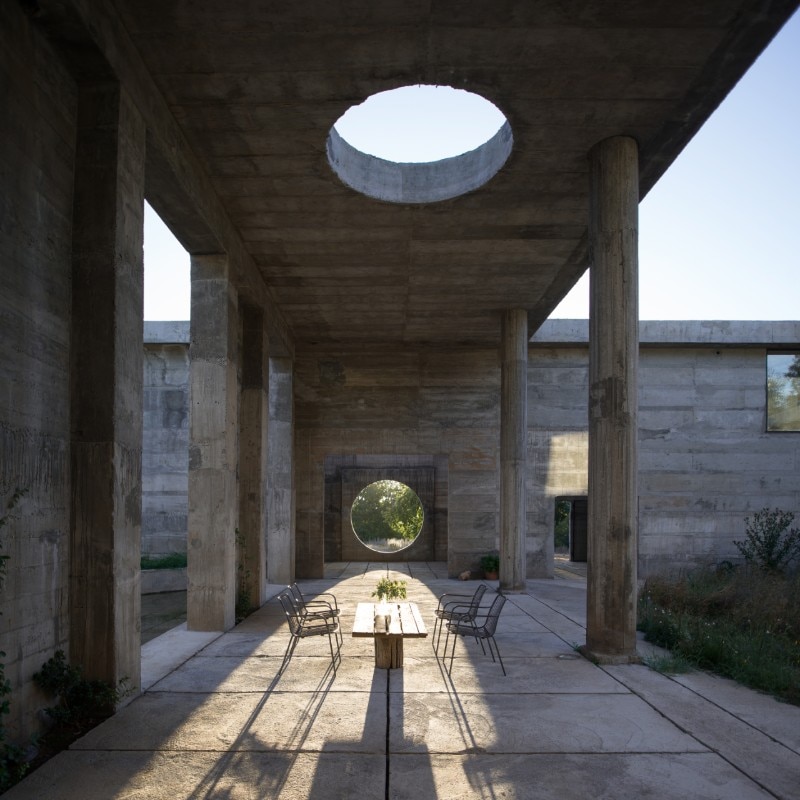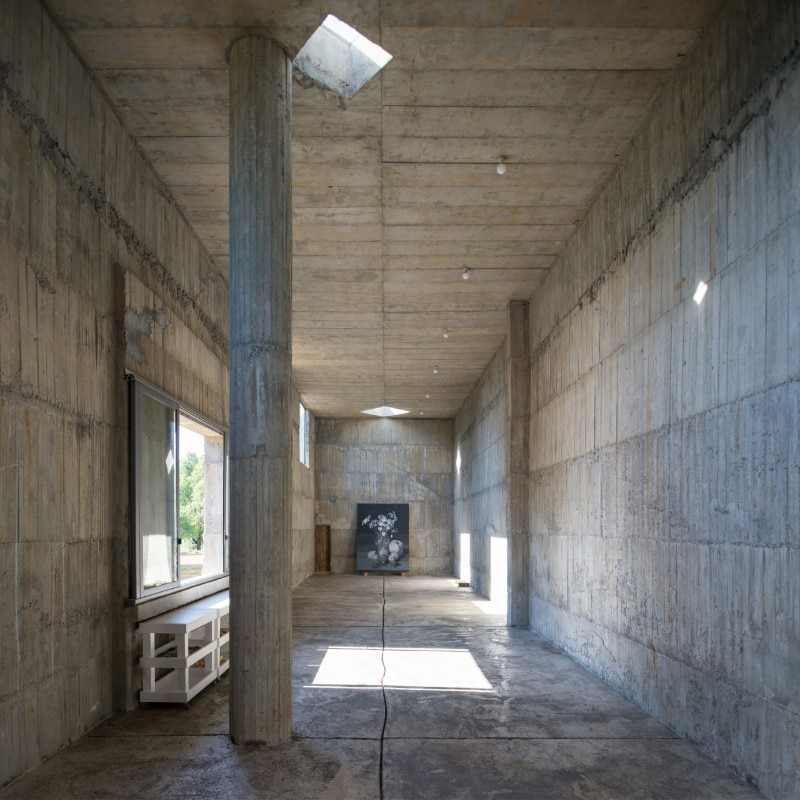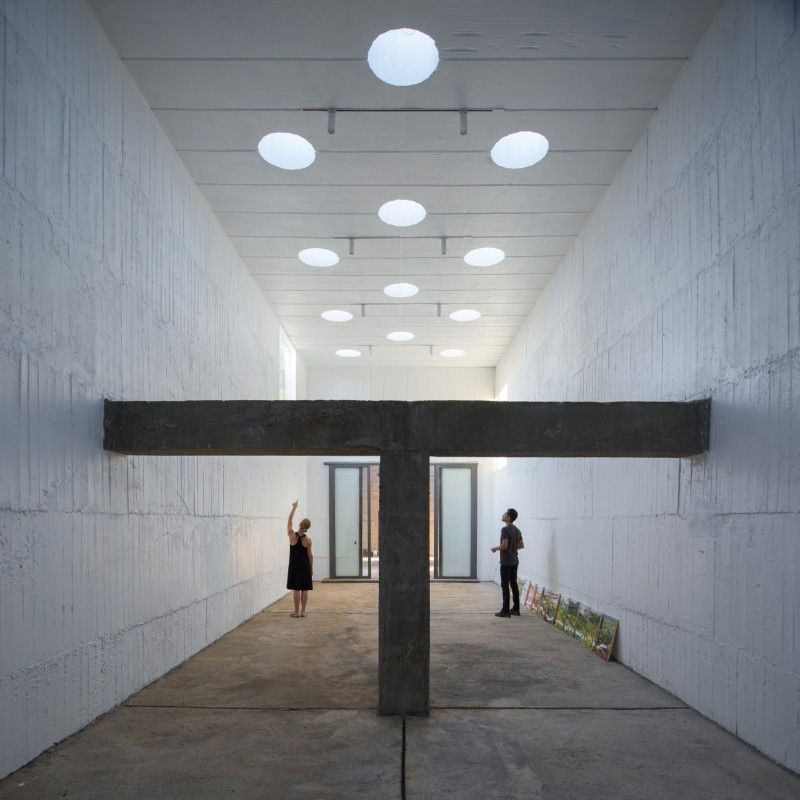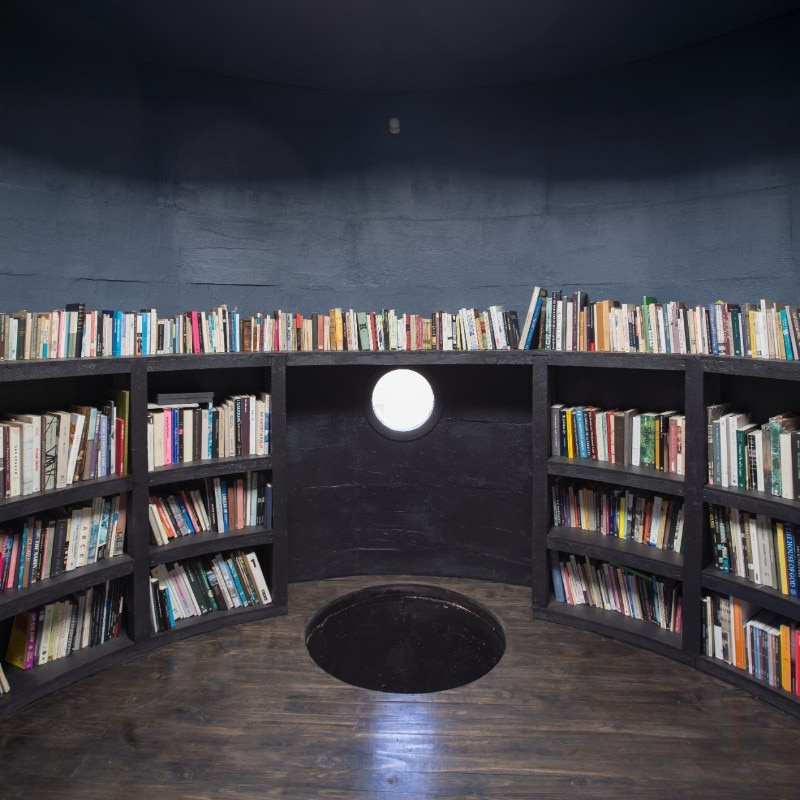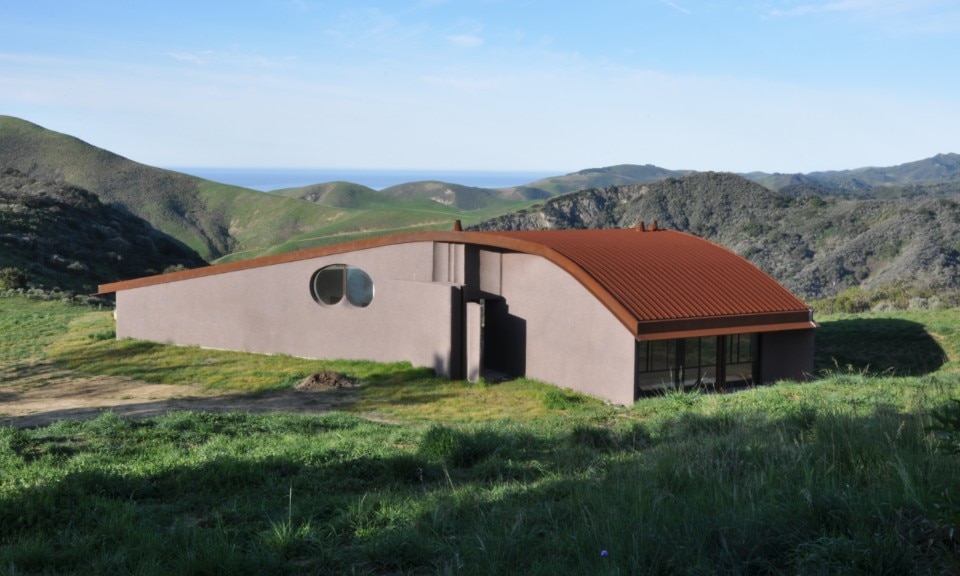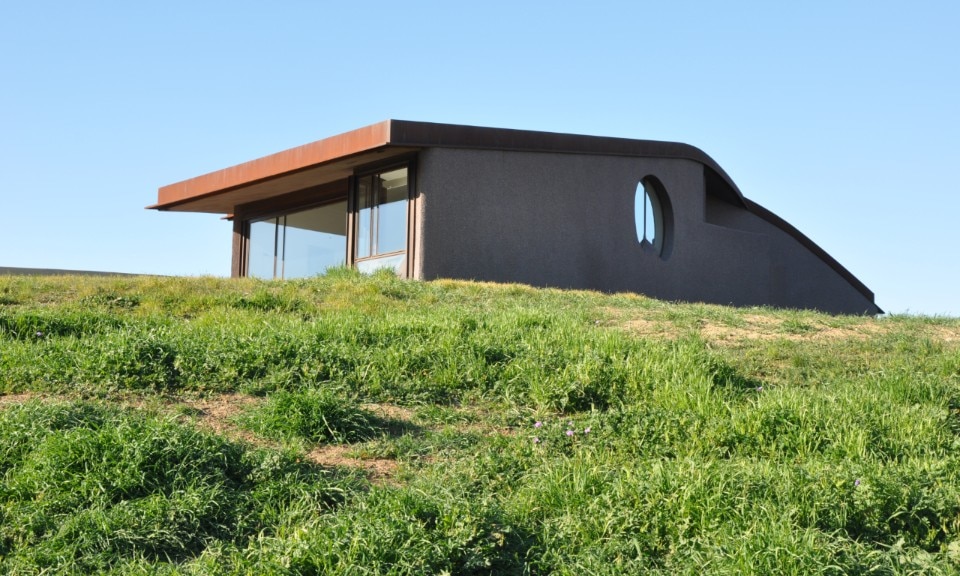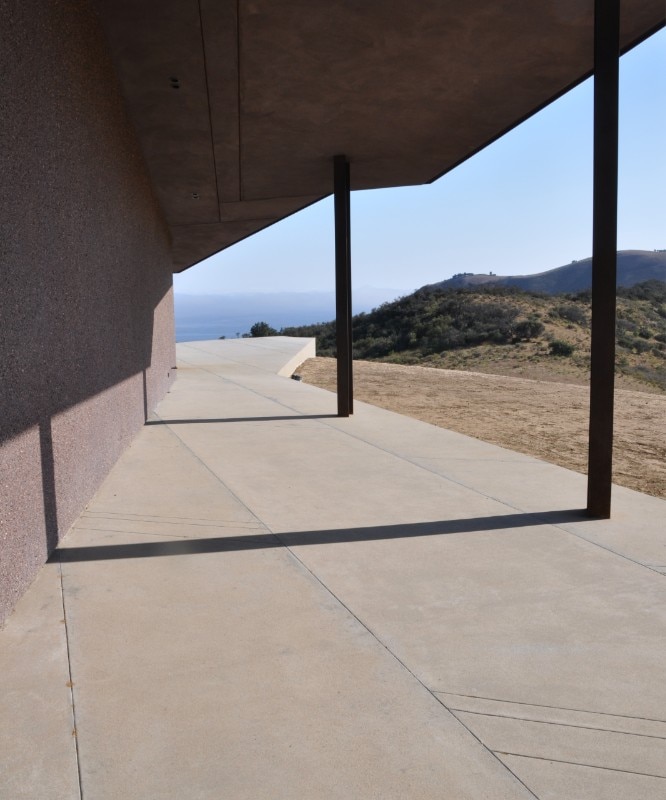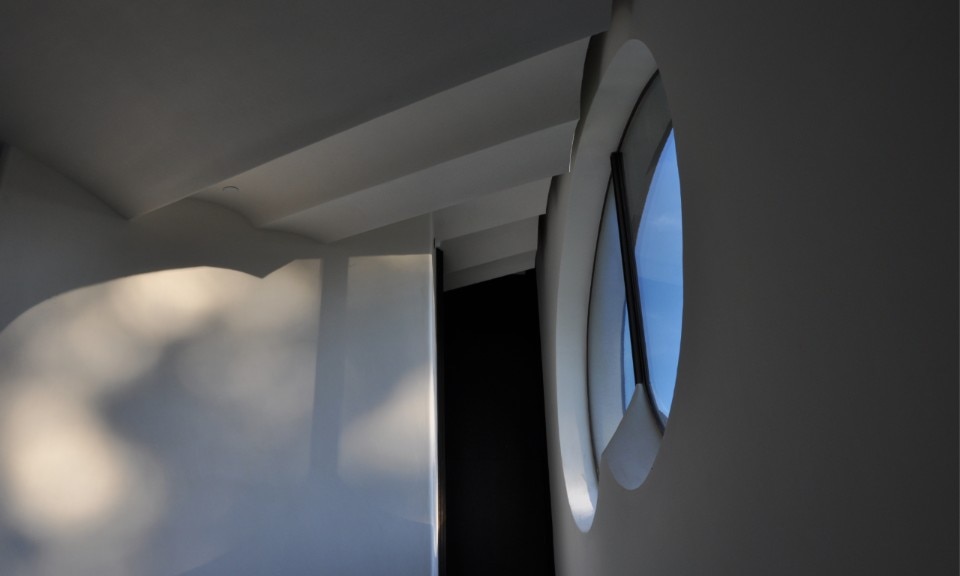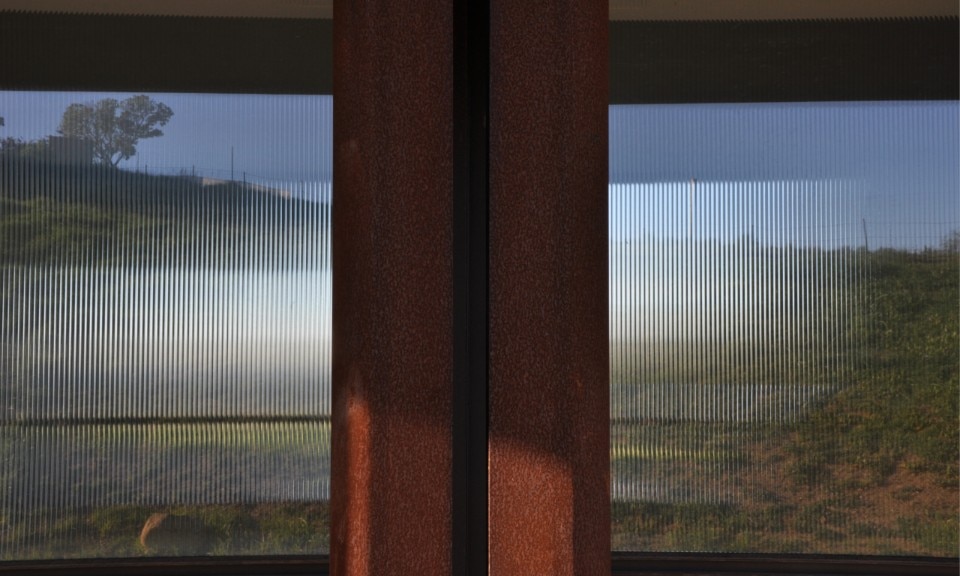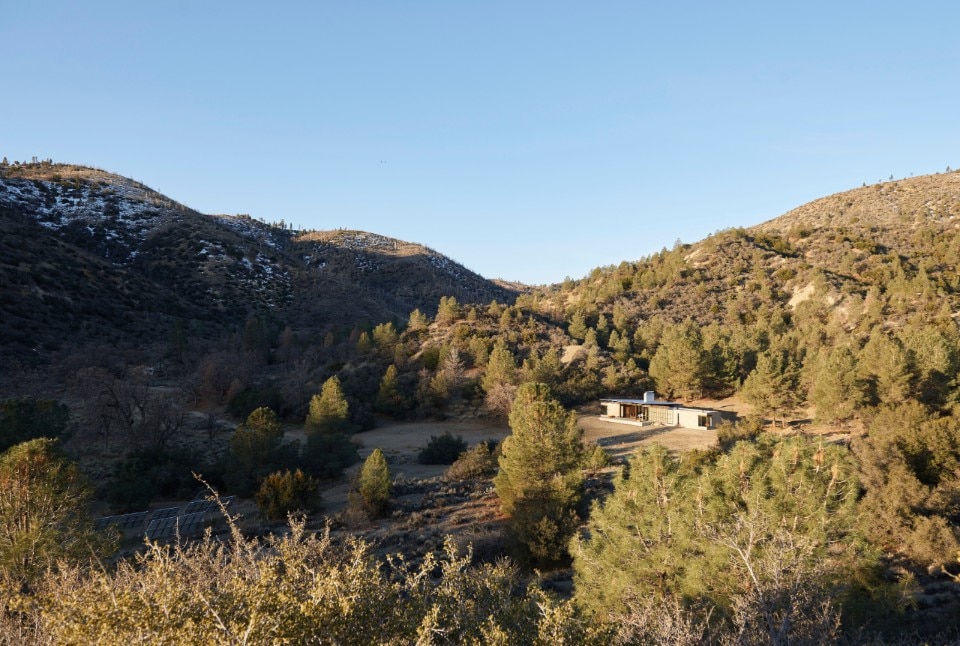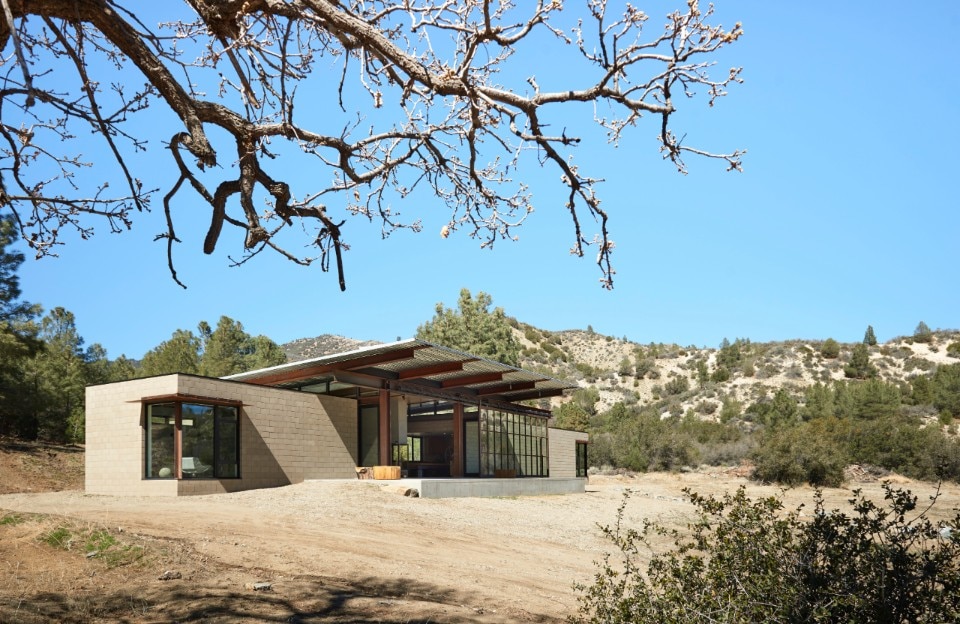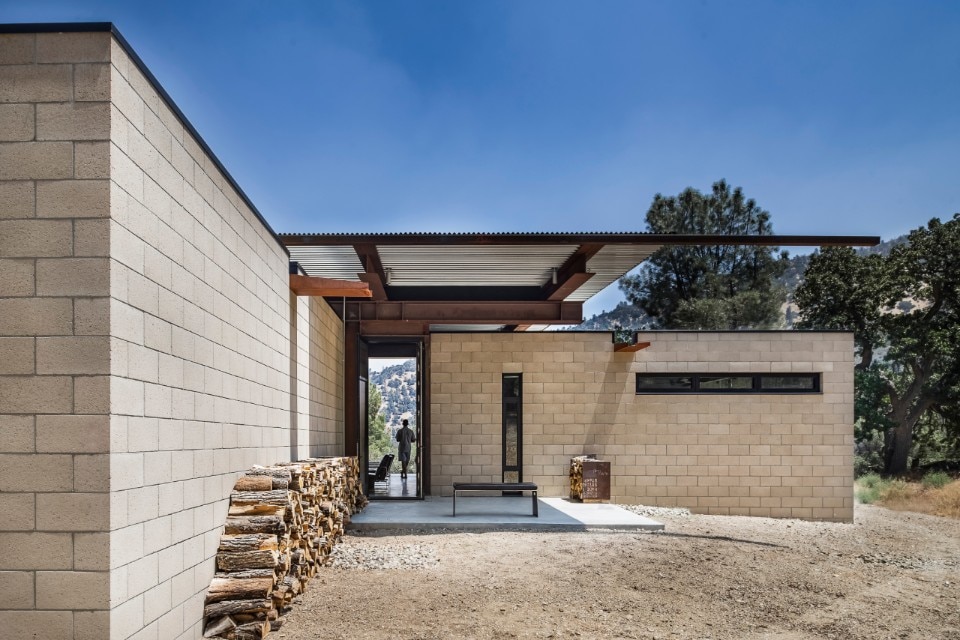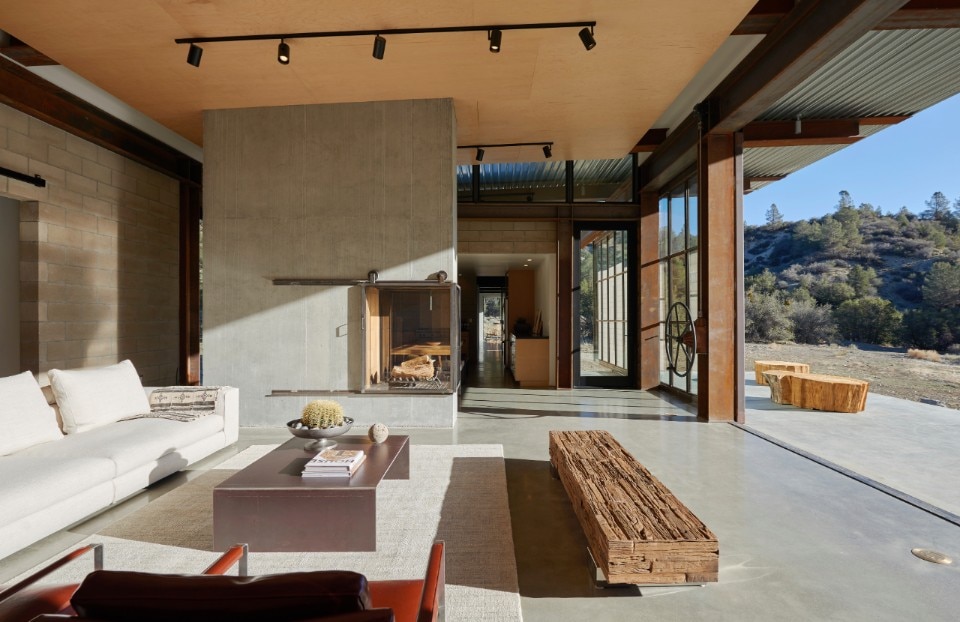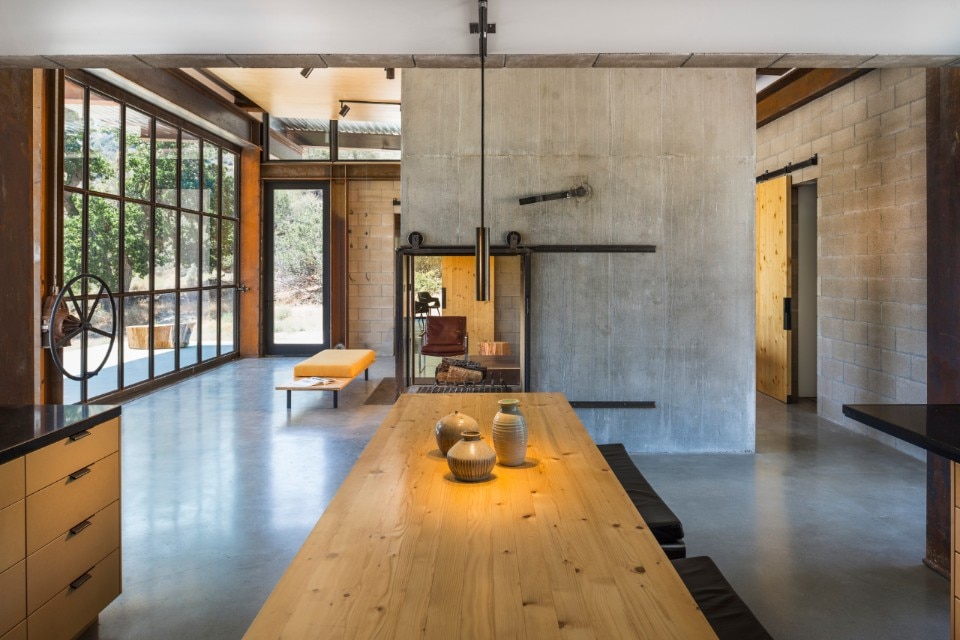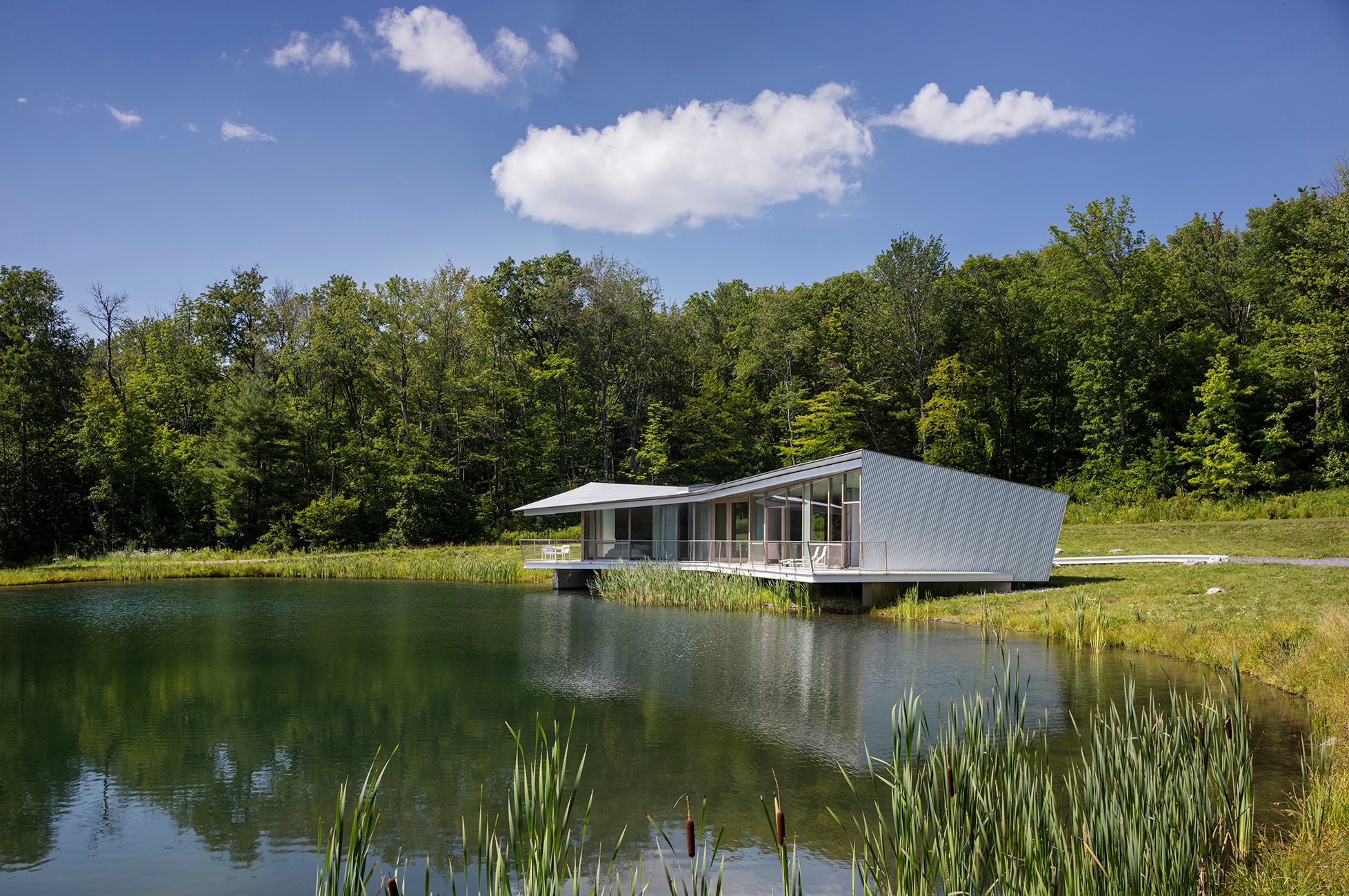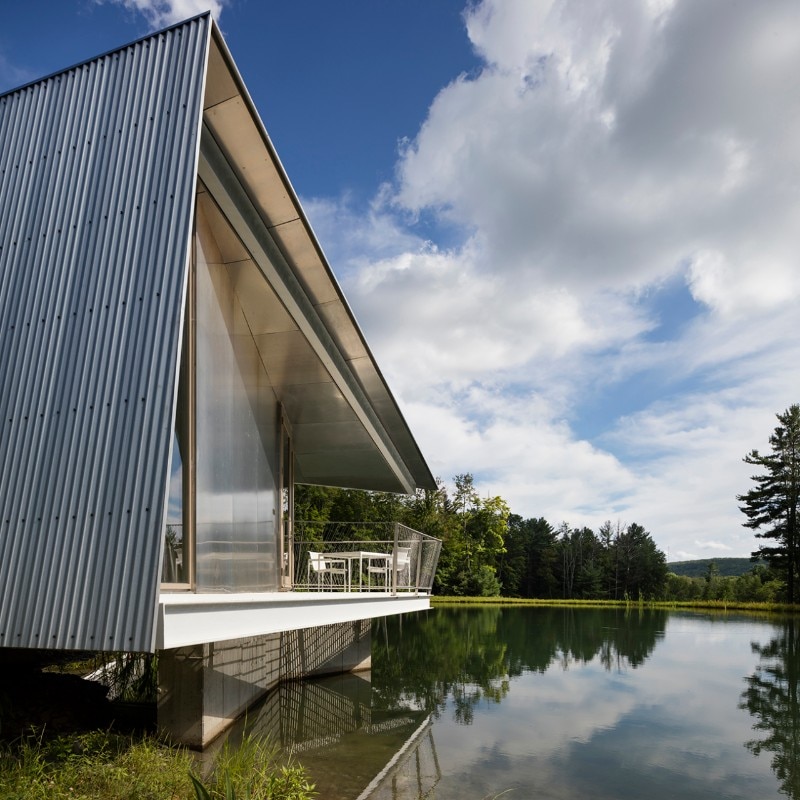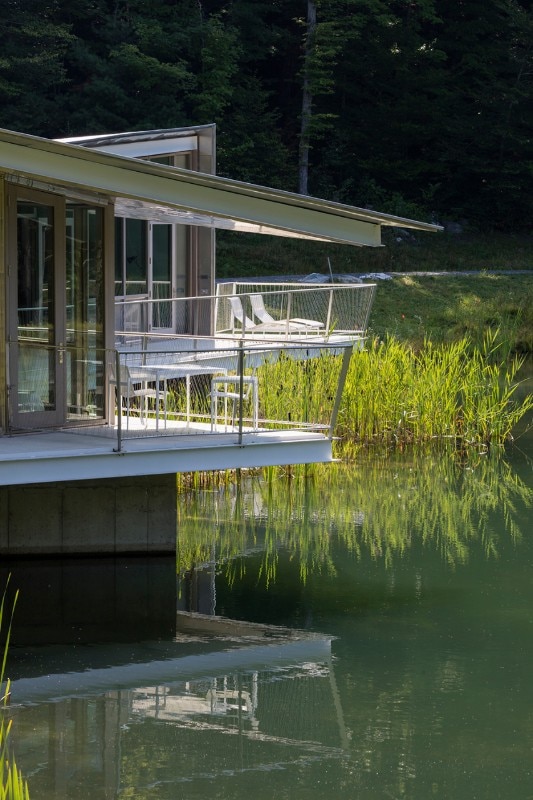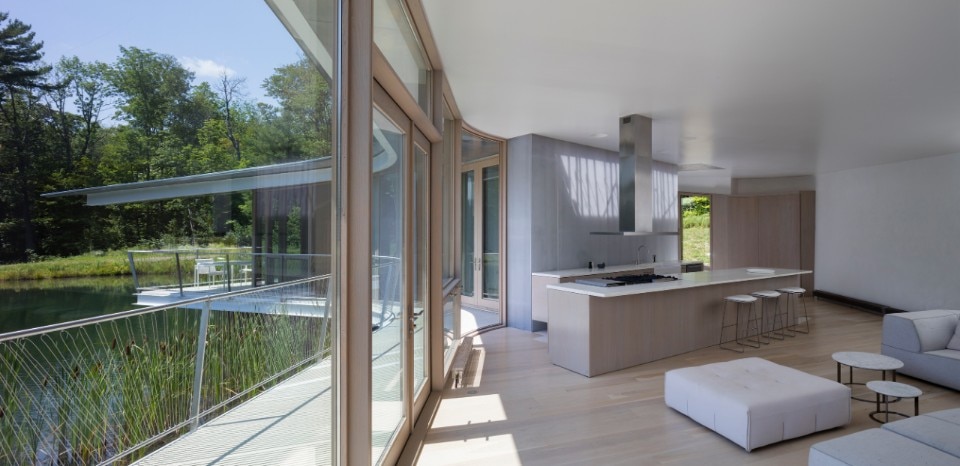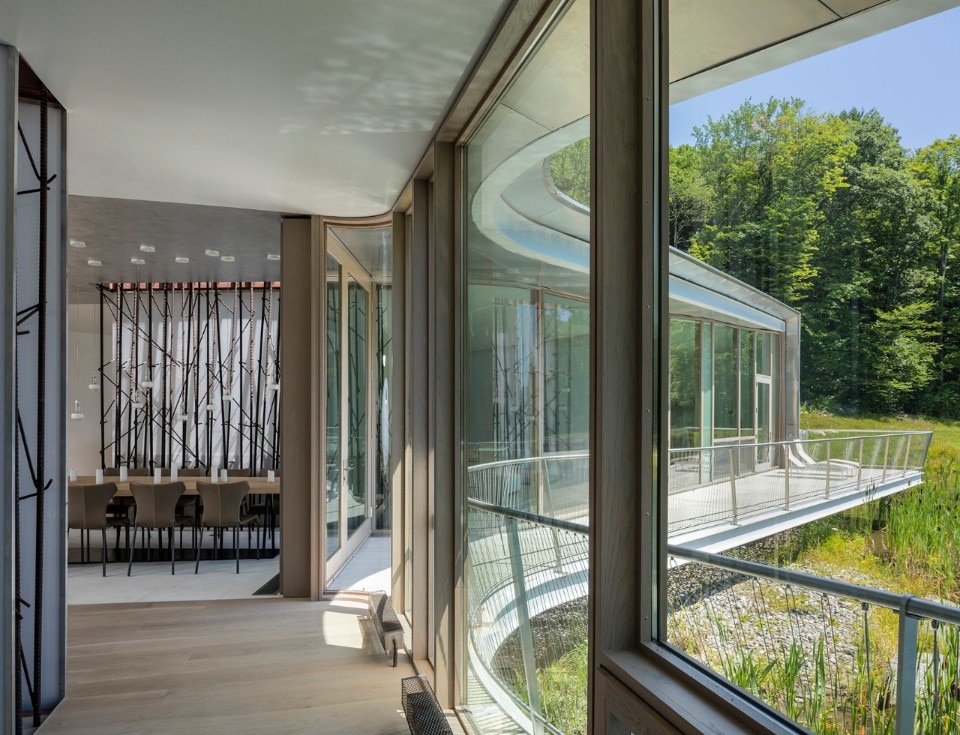This article was originally published on Domus 1075, January 2023.
In the spirit of Edward O. Wilson’s ‘proposal to commit half of the planet’s surface to nature, the following projects are examples of two types: rural villas as stewards of natural preserved landscape and dense-pack settlements that concentrate built space as opposed to horizontal sprawl.
Each spread illustrates the idea of “Half-Earth” via a comparative chart – natural landscape on one half, dense packs on the other. Select projects are shown in greater detail with drawings and views following the “Half-Earth” spreads. Wilson’s “Half-Earth” argument puts biodiversity in the primary driving position of any future development.
1. Luna House, Pezo von Ellrichshausen, Yungay, Chile
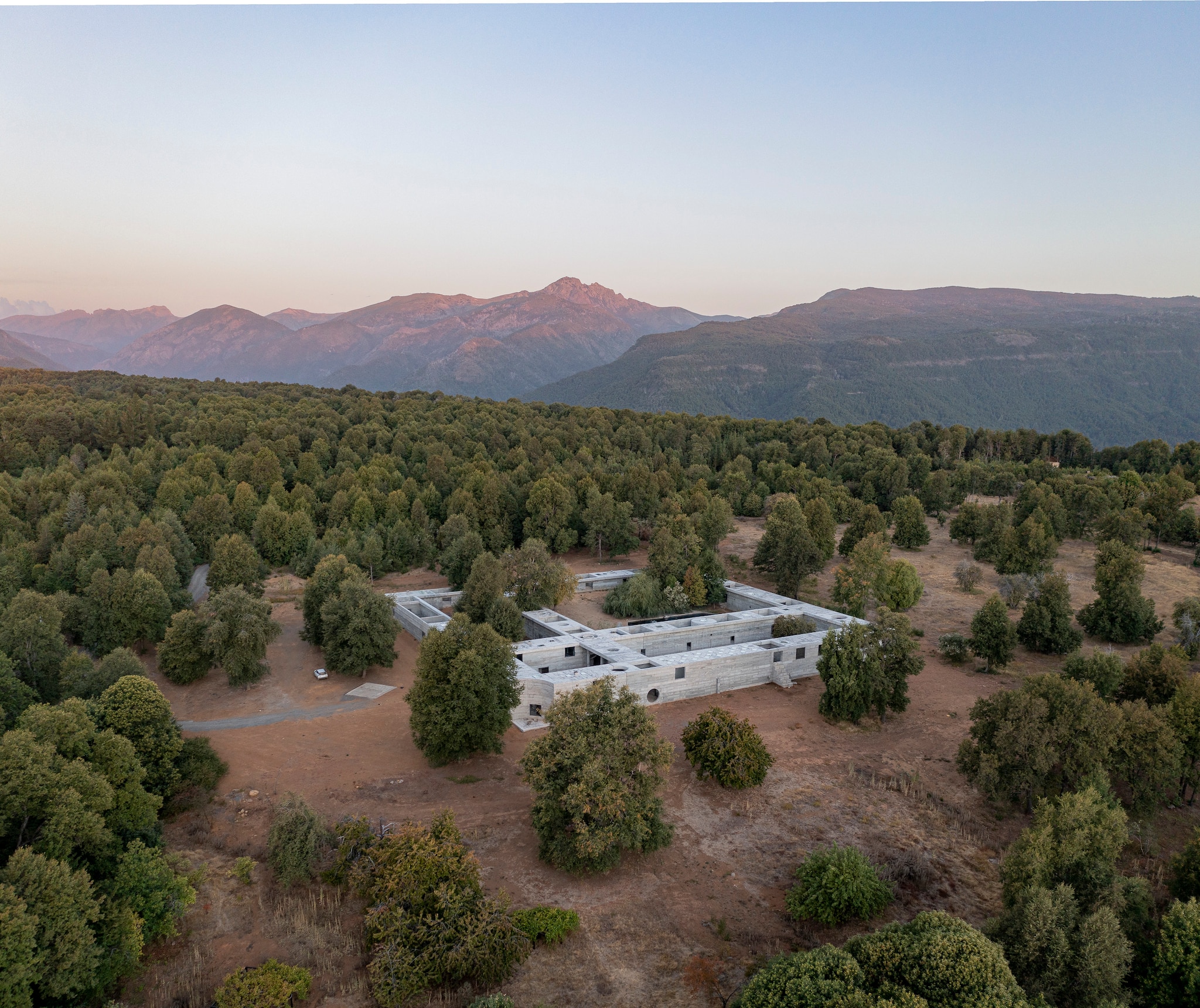
I have noticed the great care and making of concept drawings in your work. During this moment of the omnipresent beginnings via the digital for students, I always say that “drawing is a form of thought”. What is your opinion?
Mauricio Pezo We try to see, read and understand the world through the things we do. We normally produce many paintings in various techniques while developing our ideas for buildings. We believe that drawings, paintings and buildings themselves are devices through which we reflect on our human condition.
Sofía von Ellrichshausen We prefer to make things with our hands. Perhaps this is a romantic, and certainly inefficient, form of practice. But we feel there is an enormous value in this kind of intuitive detour. The more time we spend making a painting, the more we can reflect on its nature. When we use painting as a means to produce a building, the picture becomes a window, or even a mirror, that unveils the meanings otherwise hidden between walls and columns. In fact, the fictional dimension of painting implies an act of faith, an illusion, which we hope to translate into the architectonic space.
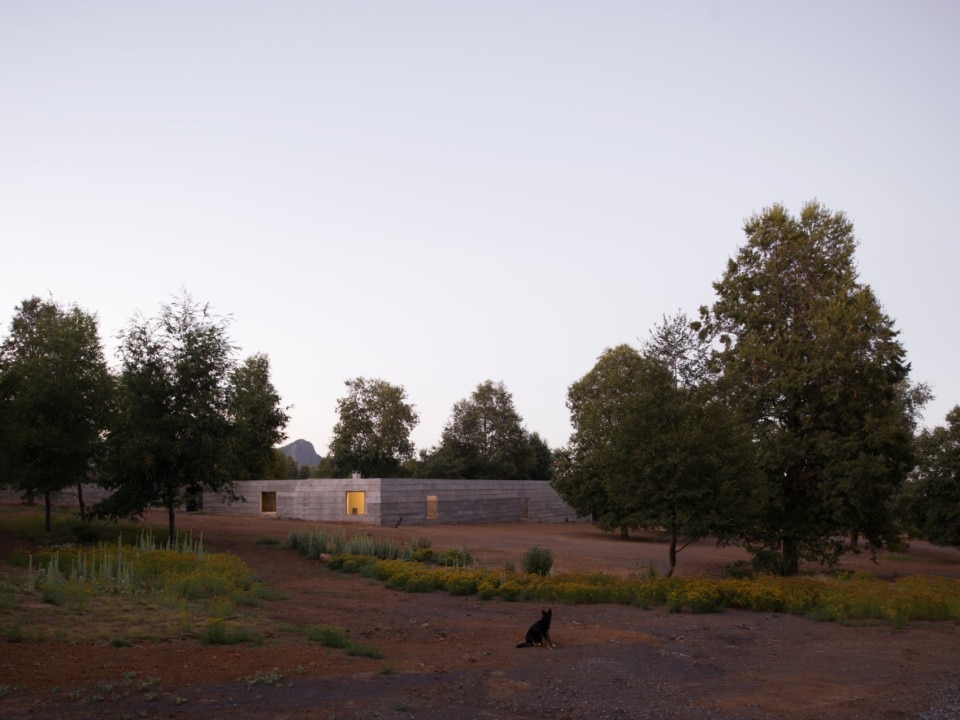
This issue of Domus is titled The oceanic. What are your remarks on “the oceanic feeling”?
MP I believe that the experience of architecture is always relative to what is in front of us together with what is actually not there, between the presence of things and their representation. When I experience a thick column, of course I can touch it, I can move around it, I can feel its size in relation to my own body. And yet, at the same time, I know there is something else that the column is concealing. There is a physical behaviour, the actual transference of structural loads to the ground, which I can’t see, as much as the memory of a tree trunk, the robustness of a primal character, or the sheer indication of the time of the day through its cast shadow. That hidden dimension can be equated with the oceanic feeling, and not only with the sense of oneness but also with a sense of incommensurability, of vast extension, while being in a one-to-one relationship with a man- made thing. Thus, the column can be interpreted as a latent subject, as a vertical force, straight and stable, in resonance with our own verticality and our own stability.
SvE I would also expand the understanding of the oceanic feeling, the sense of unity within vastness, to the primitive feeling of solitude. I believe that architecture is ultimately a form of empathy, of identification of subjectivity at a very deep level. Almost as if in a loving couple, in which one member takes care of the solitude of the other, our relationship with buildings, at least with the buildings we admire or we would aspire to produce, is based on that primitive loneliness. Our Luna House, for instance, defines a secluded domain within the natural landscape. It is both a cloister and a maze, detachment and puzzle, abstraction and wilderness. This is a kind of tacit marriage, following Rainer Maria Rilke’s advice, in which “each partner appoints the other to be the guardian of his solitude”.

Are you familiar with the writing of Edward Osborne Wilson and his 2016 book Half- Earth? The preservation of over 300 acres of natural landscape adjacent to Luna House might be a parallel.
SvE Since my father was an ecologist scientist, I remember reading On Human Nature by Wilson when I was a kid. Of course, at that early age you are not really aware of the impact of the physical or mental nutrients you are given. I suppose we have followed Wilson’s ideas more as an ethical attitude. We certainly believe that many of the current catastrophes of the world can be tamed with a decrease in population and, even more, by a decrease in the meaningless consumption promoted by the capitalist paradigm.
MP And yet, we are in fact sceptical about the moralist claims in favour of or against certain materials for architecture. Of course, the more sustainable form of architecture is the one that is never built. And this might be one of the justifications that has empowered so many academic, non- practicing architects. It is safer to leave ideas on paper or to reclaim existing structures, even if without architectonic quality. However, I believe this is no more than an oversimplification of the core problem. For us, the fundamental problem of architecture still lies at a conceptual level. We believe that the traditional distinction between architecture and nature is rather obsolete. We prefer to understand architecture as a form of nature, in fact, as a second nature, or as a prehistoric environment framed by a frugal degree of intentionality.
SvE Luna certainly materialises that form of reciprocity. Despite its large outline, the actual conditioned interior space is rather disproportionate, about one-fifth of the total volume. The other four-fifths are open spaces in which plants, animals and other organisms live. Likewise, the whole property is left untouched, with a long-term plan to reclaim the native forest that has been progressively eroded throughout the whole region.
2. Jay and Ellen McCafferty Studio, Coy Howard, Santa Barbara, California, USA

In the 1970s and ’80s, you invented the “drawl” as an exploration of drawing fused with model as a tool for design. The McCafferty Studio seems to warp slightly along with that early method. Is that a valid reading?
Coy Howard Yes, I must agree with James Joyce here, who said that as an artist he took responsibility, and credit, for all possible interpretations of his work. More specifically, Steven, the drawls were an aspect of my process in developing my design sensibility. I was searching in my work for an emotional feeling tone that transcended formal geometric manipulations – for work which presenced the sensuous immediacy of aesthetic experience – the core concern of my work. The drawls, being multivalent, both 2D and 3D, refined and rough, and figural and abstract, seemed to have the right qualities that married gestural tactility with figural representation that fused knowing with feeling. These intentions, insights and issues have tracked through all of my work since I did the drawls. So, yes, Jay’s studio with its contrapposto stature, gestural embrace and tactile presence is an echo of the drawls.
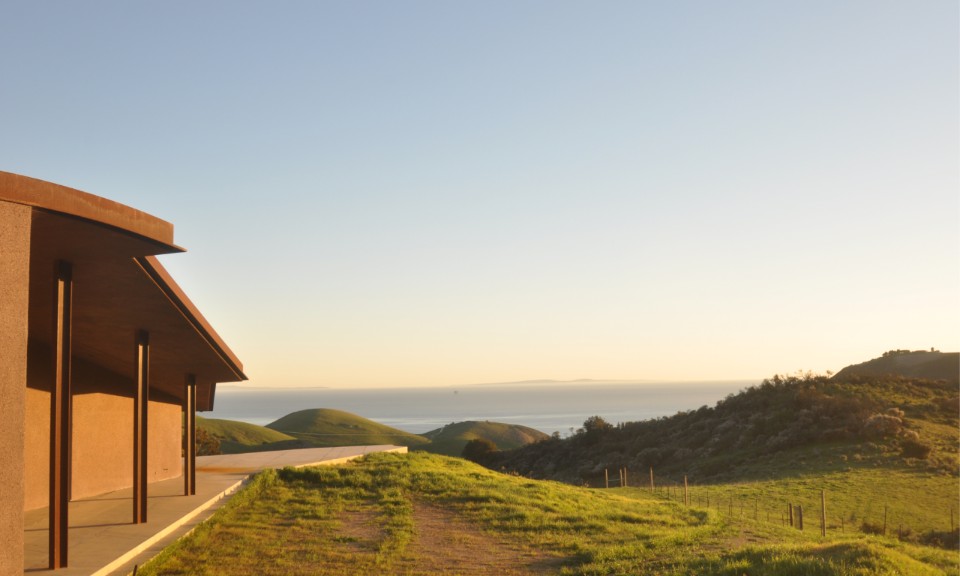
As Robert Mangurian once said, “The architect doesn’t make buildings – the architect makes the models and drawings. They are the purest expression of his ideas. They are uncompromised.” Coy, in your work it seems detail is elaborated, and the intensity of material and detail together go beyond Mangurian’s statement. Do you agree?
CH I suppose Robert is right, at least with the notion of “expression of ideas”. However, I like to think that the “experience” of built form, in all its cognitive and sensory dimensions, is to be preferred over “expression”. Architecture is not a building. It is an epiphenomenon, a judgment felt and made by a person as a result of the interactions of their sensory perceptions, cognitive processes and personal values. Models and drawings are reductive abstractions of a situation and proposal. They cannot reflect all the forces of the lived experience of a piece of work. In my work, I try to respect and celebrate the full range of forces at play – context, programme, culture, etc. Thus, I feel I am being “responsive” with the scalefulness in the work (details, materials), not “elaborative”. It is the perception of the relational structures in the work at all scales that produces the work’s aura – facilitating it as an epiphenomenon – as architecture.
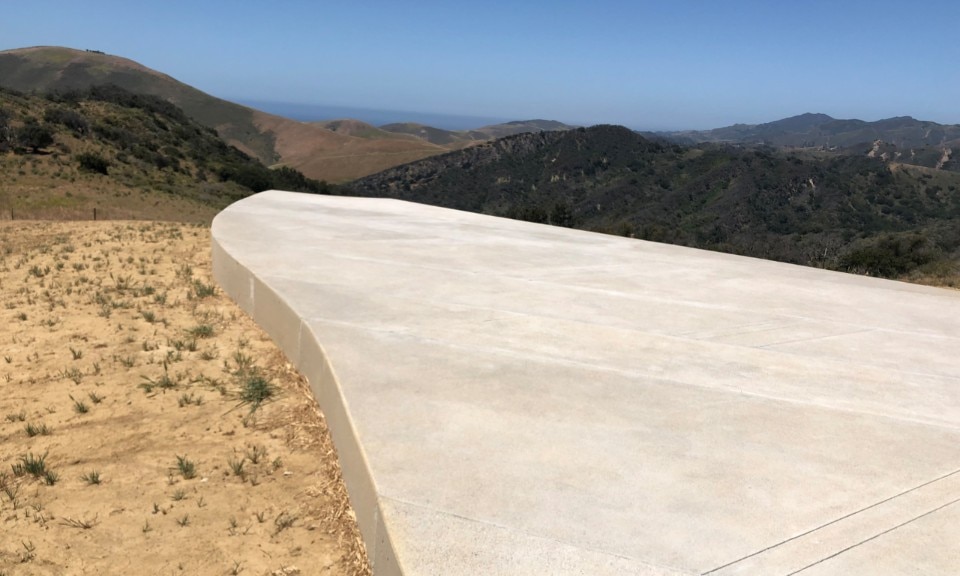
Are you familiar with the writing of E.O. Wilson and his 2016 book Half-Earth? Might the preservation of over 1,000 acres of natural landscape adjacent to the McCafferty Studio be a parallel?
CH No, Steven, I am not familiar with the book. However, the notion of half is of great interest to me. In all disciplines, which is to say within human consciousness, if not reality, the principle of polar oppositions is foundational to creativity – to the creation of wholes. In science there is the general principle of polarity, in art the principle of complementary contrast, and in reason the principle of thesis and antithesis. It is from juxtaposition, mutual interpenetration, or simultaneous co-arising that new things are created – as hybrids or new fused wholes. In design, two processes are dominant, genre- crossing and escalation of low cultural products to high culture products. In the use of both processes I prefer mutual interpenetration and simultaneous co-arising as strategies that accentuate some qualities of each while suppressing others, maximising diversity, in a play of reciprocity – 50/50, built form/land, immensity/intimacy.
3. Sawmill Tehachapi, Olson Kundig, CA, USA
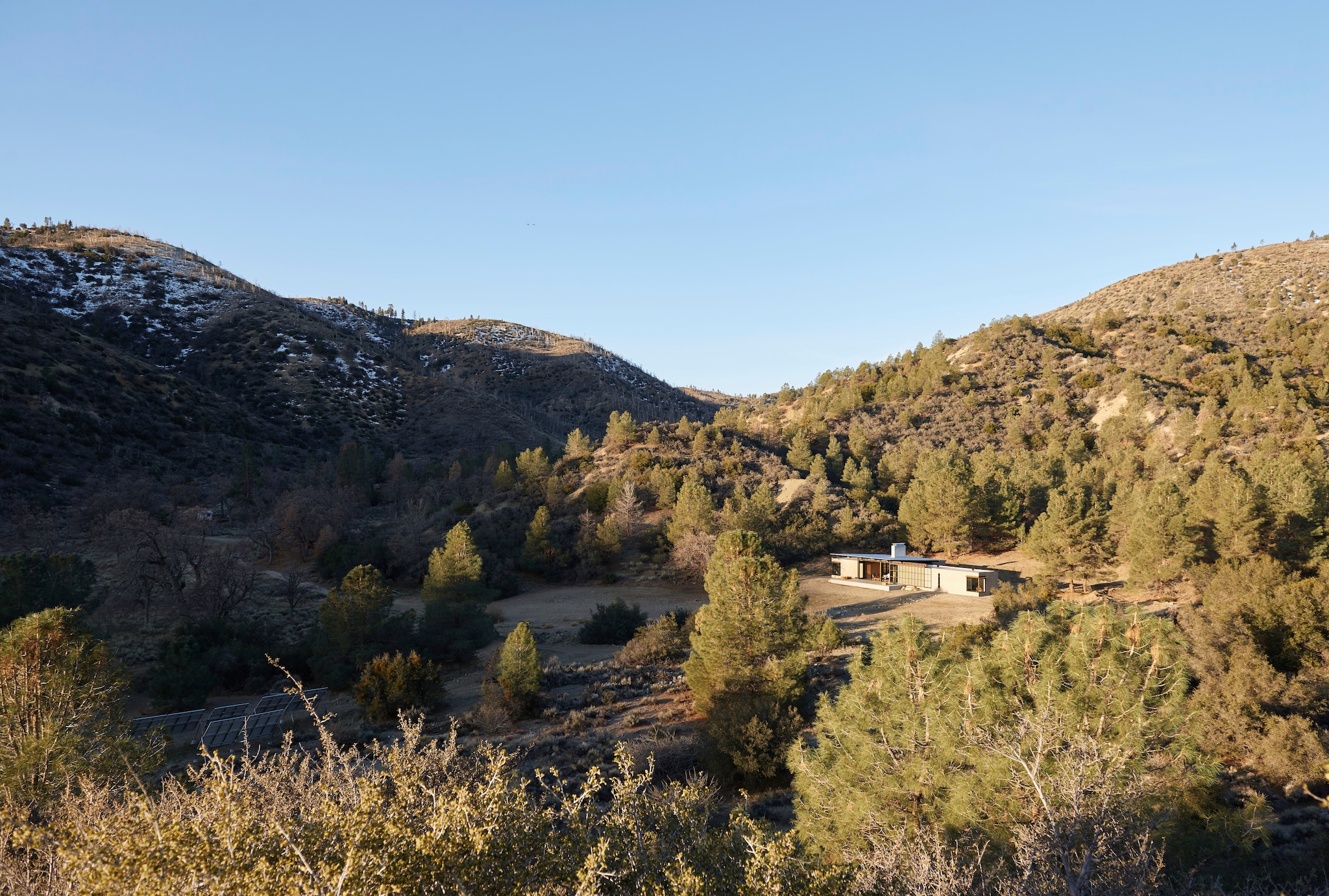
Tell me about the cruciform plan in Sawmill house. Does it have a relationship to the classical nine-square plan and, in a sense, John Hejduk’s nine-square studio plan at Cooper Union?
Tom Kundig Although aware of the history of the nine-square plan, I cannot say it was a conscious reference – maybe a subconscious ordering device with the symmetry of the centre intersection of the nine squares as the gathering family centre. The order of the plan was a rational planning response to a family of three returning from their far-reaching adult lives to an important landscape and place for them collectively. We presented to the family the ideas of gathering sleeping bags around the campfire for safety, or circling the wagons, fire, meals, etc., the family intersection. The pods are the more private perimeter. The transparency to the landscape at the seams between the pods is important to a family that spends most of their time in the landscape during the day in all seasons. Also, the idea of the nature of prospect and refuge.
This January issue is titled The oceanic. What do you think about “the oceanic feeling”?
TK The idea of “oceanic feeling” for a kid raised Unitarian has always been part of my instinct, and I always wondered about it as the basis of my intuitive design responses. Oceanic feeling is a very comfortable place for me to be in the noise of designing a complex set of design vectors. A sense of peace.
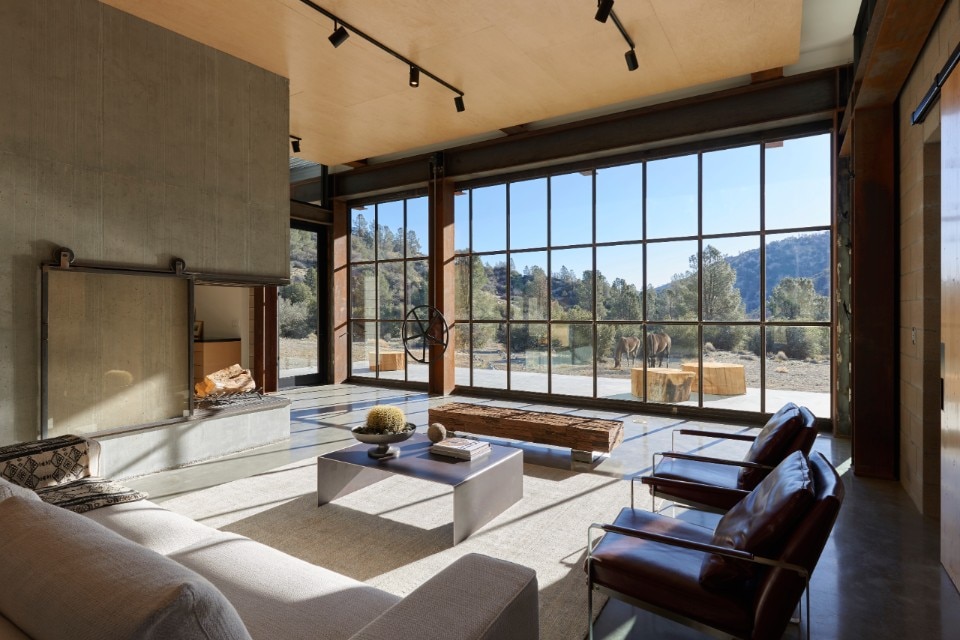
Can you remark on Edward O. Wilson’s Half- Earth concept?
TK He was one of the most impactful science thinkers for me. Richard Feynman being another. Wilson’s audacious Half-Earth idea is deeply meaningful to me as somebody who has resisted LEED because it seems so ridiculously small thinking – although at least something! A band-aid to feel good about fixing things while Rome burns, literally. His idea was of a system as large as life itself (or at least the compromise of half), recognising the absurdity that we can imagine we have any real understanding of the geometric complexity of our situation. Best is to let it take care of itself but give it the scale and proportions it needs.
4. Ephemeral Edge Austerlitz, Dean/Wolf Architects, NY, USA
I visited this house in 2019. Can you describe the concept of Ephemeral Edge?
Kathryn Dean Ephemeral Edge is a weekend home that lies just three hours from New York. The aim was to dilate the perception of time for those living in the building, a sensation that the landscape is often able to heighten. The project is also a response to the altered topography of the site, which consists of a wooded slope ending in a level clearing that was created to make way for a pond. In the plans of the person who modified this landscape, the house was to be built at the top of the slope, away from the water. But we decided on a different strategy to give new unity to the space between the banks and the trees. With this in mind, we placed the structure along the pond’s edge and incorporated the torqued banks into the residence. What was beautiful about the location – the ripple of the wind on the water, the distant view of the ridgeline, the birds that flitted over the cattails – was captured and accentuated.
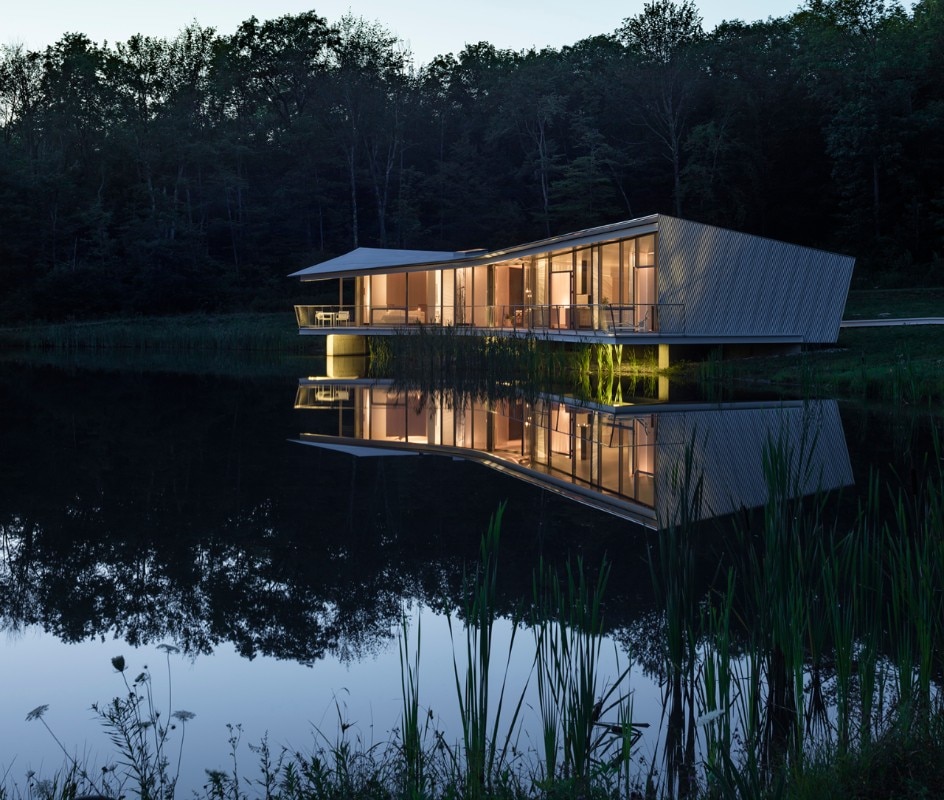
This issue of Domus is titled The oceanic. Can you comment on “the oceanic feeling”?
KD The oceanic feeling is a term coined by Romain Rolland in a letter to Freud to describe what he called “the direct fact of the feeling of the eternal”. He went on to say that it may well not be eternal, but subjective and simply without perceivable limits. Freud then locates the oceanic feeling within the primitive ego of the first stage of child development and links it to primary narcissism. While as a mother I can understand this, I find this interpretation incomplete. It wasn’t until much later in life, perhaps as he approached death, that Freud acknowledged that he had not done justice to religion when he coined this understanding of the oceanic feeling. This can be understood as an approach, within the individual unconscious, to the sacred after religion was dead. While the first definitions in both the Oxford and Webster’s English dictionaries are the most common that connect the sacred to god or divinity, it’s the Oxford’s third definition that interests me: “Regarded with or deserving veneration or respect as of something holy.”
Likewise, the second definition in Webster’s: “Devoted exclusively to one service or use (as of a person or purpose).” These definitions allow the oceanic feeling to exist without a direct correspondence to either religion or early psychoanalysis. At the time Rolland was writing, perhaps it could be understood that the eternal was predictable at the very least through the continuity of life on Earth as he knew it. (He died before the first atomic bomb was dropped). For us, in the 21st century, this is no longer the case. Climate change, food shortages, wildfires, world wars and pandemics all threaten the Earth in previously unimaginable ways. Our eternal is fragile. This fragility needs to be understood, as well as the great responsibility, to protect the eternal. Sometimes the most impactful understanding is direct experience. Emotional learning can be deeper than intellectual understanding. The feeling of oneness with all things is one important way to create a sacred connection to the Earth that gives way to great respect and sets places apart – producing the sentiment of the oceanic feeling.
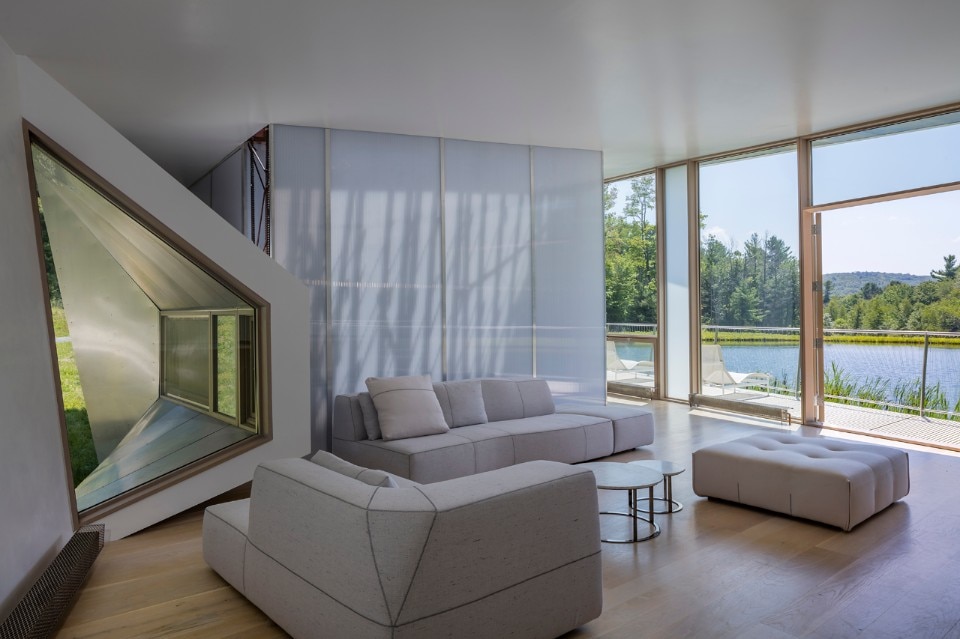
Are you familiar with the writing of Edward O. Wilson and his 2016 book Half-Earth? Might the preservation of the site’s 6 hectares next to over 800 hectares of preserved forestland adjacent to Ephemeral Edge be a parallel?
KD It’s an interesting observation. Wilson calls for setting aside half the Earth’s land and oceans to preserve 85 per cent of living species. He compares this to the current condition where only 10 per cent of the natural habitat now survives in many areas rich in species diversity. This 10 per cent can only support 50 per cent of the natural species, but if that last 10 per cent is lost, no species will survive. The 800-hectare Beebe Hill State Forest lies behind the site of Ephemeral Edge, where the wooded hillside blends into the state forest. Technically, building anything on this site does not comply with setting aside half the Earth. Building is always the opposite of preserving natural forests. However, in this case, the land was going to be built on by someone. Thus, I think that building a small 185-square-metre house on such a large tract of land can be understood this way. It was an act of preserving the site as much as possible.


